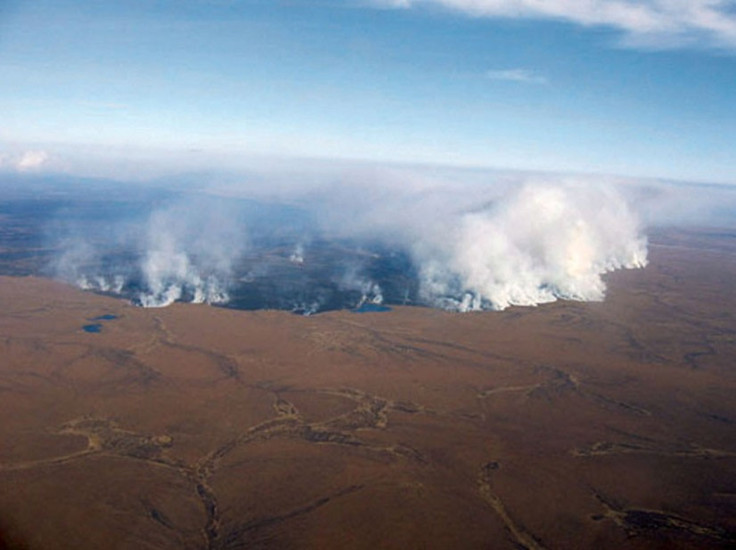Massive Arctic Tundra Fire Hints at Accelerated Global Warming

A new study out of the University of Florida (UF) shows that the increased prevalence of wildfires in the Arctic tundra could have a drastic effect on the global climate.
After a 10,000-year absence, wildfires have returned to the Arctic tundra and the new study shows that their impact could extend far beyond swaths of blackened flames. In the study, first published in the journal Nature, UF ecologist Ted Schuur quantified the amount of soil-bound carbon released into the atmosphere in the dramatic 2007 Anaktuvuk River fire. The fire covered more than 400 square miles on the North Slope of Alaska's Brooks Range - more than doubling the extent of Alaskan tundra visited by fire since 1950. It released 2.1 million metric tons of carbon, or roughly twice the amount of greenhouse gasses emitted by the city of Miami in a year.
Michelle Mack, associate professor of ecosystem ecology in UF's department of biology, argues that this is significant enough to suggest that Artic fires could have a significant impact on the global climate. Mack led the research team and is currently conducting further field studies in Alaska.
"The 2007 fire was the canary in the coal mine," Mack says. "In this wilderness, hundreds of miles away from the nearest city or source of pollution, we're seeing the effects of a warming atmosphere. It's a wakeup call that the Arctic carbon cycle could change rapidly, and we need to know what the consequences will be."
Fires in the tundra are uncommon because the ground is covered in snow and ice for a large porition of the year. Even in summer, temperatures are low and the ground can remain wet after the ice has melted. Yet, 2007 saw unusually warm and dry conditions across much of the Arctic - resulting, among other things, in spectacularly fast melting of Arctic sea ice. This created conditions more conducive to fire, and when lightning struck the tundra in July, the Anaktuvuk River fire ignited.
"Most tundra fires have been very small - this was an order of magnitude larger than the historical size," said Mack.
What makes fires in the tundra more harmful to the environment?
Not only did the 2007 fire pump greenhouse gases into the atmosphere, it consumed up to 30 percent of the insulating layer of organic matter that actually protects the permafrost beneath the tundra's shrub and moss covered landscape.
In a pine forest, the fire would burn up leaf litter on the ground, but not the soil beneath. However, because the Arctic tundra has a carbon-rich, peaty soil, the ground itself is combustible. When the fire recedes, some of the soil is gone.
What's worse, once the vulnerable permafrost is more exposed and covered by blackened ground, it absorbs more of the sun's heat and accelerates thawing.
"When the permafrost warms, microbes will begin to decompose that organic matter and could release even more carbon that's been stored in the permafrost for hundreds or thousands of years into the atmosphere," Mack says. "If that huge stock of carbon is released, it could increase atmospheric carbon dioxide drastically."
Climate models generally predict warmer temperatures across the Arctic, which could increase the frequency of fires and result in a net loss of carbon into the atmosphere - reinforcing global warming.
A previously published study offers a different view. Another of the US research team, led by Gaius Shaver from the Marine Biological Laboratory in Woods Hole, said the northern region of Alaska could become "vastly different from the frozen, treeless tundra of today."
"And it's one that may feed back positively to global climate change."
Meenwhile, Mack hopes her findings will open a dialogue about how tundra fires are managed. Because the Anaktuvuk River fire was in a wilderness area, it was not suppressed or contained. With better data on the long-term impact of tundra fire on global climate warming, Mack says, putting out these fires might become more of a priority.
Whatever the result, the latest data on Arctic sea ice reveals that 2011 could see a melting season to rival the 2007 record.
© Copyright IBTimes 2024. All rights reserved.






















